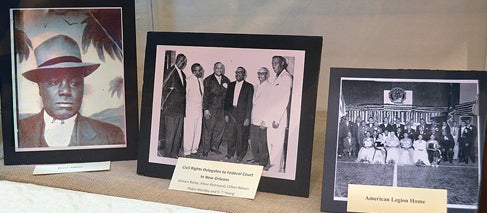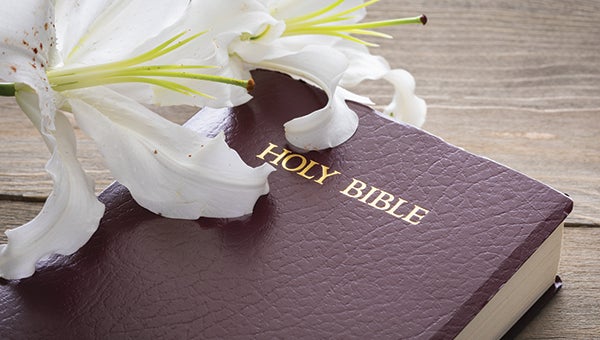Celebrating Bogalusa’s Black History
Published 1:35 am Wednesday, February 5, 2014
America celebrates its Black History throughout the month of February, and the Museums of Cassidy Park are making the recognition personal by educating and, in some cases, reminding the public about the wide-ranging contributions of local African Americans.
The Black History Exhibit will remain on display in the Pioneer Museum through the Bogalusa Centennial Celebration on July 4.
Mayor Charles Mizell asked Mary Crumedy, who has been actively involved since the Civil Rights Era, to take on the challenge of assembling the exhibit. One of the included newspaper photographs shows her walking her daughter, Sharon, to the Columbia Street School on the first day it was integrated.
Through photographs, newspaper clippings, handwritten accounts and a delightful variety of artifacts, the exhibit documents the impact of African Americans on the Bogalusa community.
That impact is far-reaching, both geographically and in areas of focus. It covers the fields of art, literature, music, sports, civic involvement and more. The exhibit proves the character of the people was, and remains, richly multi-dimensional.
Pulitzer Prize winning poet Yusef Komunyakaa, a Bogalusa native who has 13 books in print, is featured, as is the music of Henry Roeland Byrd, aka Professor Longhair. Both men have touched people around the world.
A section on the Rhythm Aces includes a trumpet, photographs, a letter from longtime member Leroy Thompson, and handwritten music transcribed by Hump Manning, who Thompson called “most amazing.”
“He could take a record and sit at the piano and write or transpose all the parts for every instrument,” he wrote.
“To my knowledge he never had any formal music training. Just a gift from God.”
Nearby, the colorful work of artist Alvin Carter, who graced Bogalusa with murals and other public art, is celebrated. Elsewhere on the glass shelves, homage is paid to Bogalusa Tigers baseball, sports legend Lynn Powe, and to the Central Memorial Spartans.
Fading pictures and yellowing copies of Bogalusa’s black newspaper, the Informer, and The Daily News share stories of accomplishment and of struggle. Crumedy walks her child to school, with Mary Keys and her son, Lindsey, close behind. Civil Rights leaders Robert Hicks, A. Z. Young and Gayle Jenkins stand or sit amidst the rubble of a classroom under the caption, “Times have changed.”
Then Rev. James Cyrus carries the Olympic torch through Bogalusa, William Bailey Jr. is the first black man hired by the local railroad, and Willie E. Ginn’s book, The Magic City, is published posthumously.
Of course, there is more on display to stir the winds of time and blow the pages of the history book to earlier days. And the volume is intact and unfinished.
Some of the people who are featured are now gone, but their energies are conjured and live again through the written word and the artifacts they held dear. Some still live, still contribute and continue to provide reasons for members of the community, no matter the color of their skin, to take pride and to celebrate in brotherhood.
Admittance to the museum is free and it is open on Saturdays and Sundays from 1 p.m. to 4 p.m.
Group tours and other hours are available upon request to 735-9188.






